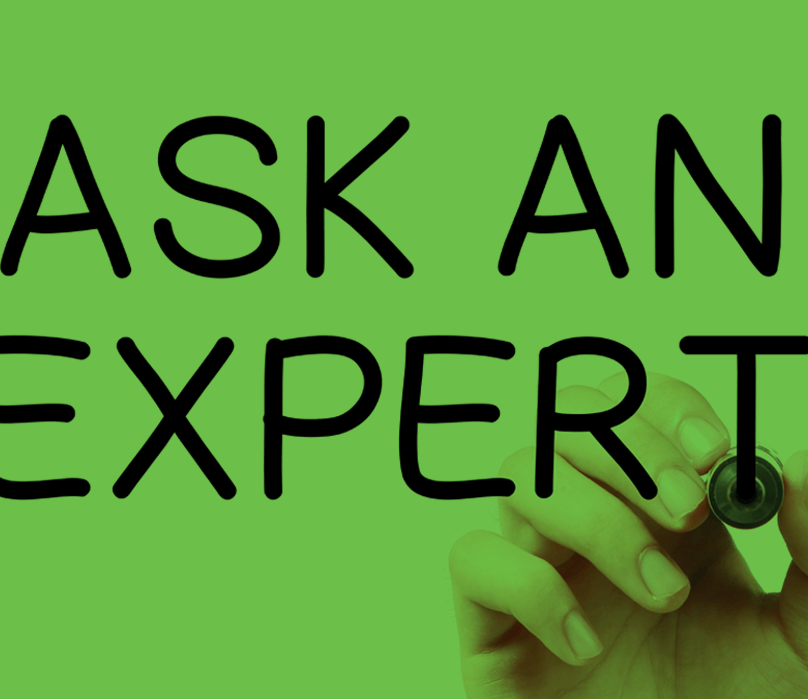OVERVIEW
Why exhibit?
Even in this digital age, trade shows continue to flourish because face-to-face marketing remains the most effective way to sell products and services. It’s especially successful when introducing new products.
When compared to the other form of face-to-face marketing, direct sales in the field, sales generated from trade show leads are much more cost effective. Studies by the Center for Exhibition Research (CEIR) and Exhibit Surveys, Inc. show that closing a lead generated at a trade show costs almost 40 percent less than a lead generated from the field.
Trade shows are also the only marketing medium where the buyer has paid his own money and invested his time and effort to listen to sales presentations. How can you not include trade shows as part of your company’s integrated marketing mix?
Purpose of This Guide
This guide has been designed to help you — whatever your experience level — to do a better job of presenting your company’s products and services at trade shows and other special events.
It’s filled with tips and tactics you can use immediately in your corporate exhibiting program. It will also introduce you to many products and services that will make your job easier. Finally, it will take you step-by-step through the exhibiting process, from pre-show preparation and exhibit hall onsite activities to post-show follow-up.
EXHIBITION GOALS & OBJECTIVES
Have a plan
The first step toward a successful exhibiting program is to “Think Big Picture.” How does exhibiting fit into your company’s overall marketing strategy? Are you exhibiting to increase name awareness? Increase market share? Enter new markets? Who are your target audiences and what do you want to communicate to them?
Set measurable goals and objectives
Once everyone has signed off on how your trade show exhibiting program will fit into your company’s integrated marketing program, you need to set measurable goals and objectives. Then, put the plan in writing. This is a key element for trade show exhibiting success because comparing your results to your plan helps you to justify the cost of exhibiting and to determine if a show is worth participating in next year.
A good way to set goals and objectives is to involve your sales team in the process. What can you do on the exhibit hall floor to make sales easier for them? Many companies use both specific and quantifiable measurement targets including:
- Number of qualified leads from your targeted audiences
- One-on-one meetings with key accounts
- Value of sales confirmed
- Number of requests for proposals
- Amount of media coverage obtained
PROPER SHOW PREPARATION
Identify the right buyers
Begin by asking your in-house sales team and your distributors who they would like to have visit your exhibit. From these names, build a list of customers and current prospects to target in your pre-show promotion program. Be sure to include all sales inquiries from the last 12 months. Many shows can help you supplement your list by providing pre-registered attendee lists, by job category. You may also want to include members of the association(s) involved with the show.
Attract the right buyers
In today’s business environment, you need to be proactive in attracting the buyers you want to see at your exhibit. According to CEIR, 81 percent of trade show attendees have buying authority. This means that more than 4 out of 5 people walking the aisles are potential customers. Work hard before the show to be sure the audience you seek visits your exhibit.
Pre-show marketing techniques that work
If you do ANY pre-show promotion, your chances of attracting your targeted attendees increase dramatically. According to The Power of Exhibitions, the landmark study of trade shows commissioned by CEIR, exhibitors who integrate marketing components into a total exhibition program increase both their target visitor attraction and lead conversions into sales.
The press release
Whether you use e-mail, social media, blogs, websites, newsletters or printed media, you still need an effective way of delivering your company’s message. In almost every case, the best way to do this is by writing a press release.
Photos
Photos are very important to the success of a press release. The old adage “a picture is worth 1,000 words” is really true. Editors will use good professional photographs. The easiest way to send photos is directly embedded in the press release or as an attachment to the release. Editors also don’t mind going to a website and downloading a photograph.
Always write captions for your photos and be sure that what you send or have available on your website is high resolution.
Press kits
Press kits are a one-stop source for the media to get information about your company and products. Most shows have a press room near the show floor. Your exhibitor manual will have the location of the press room, mailing address and how many press kits to send to the press room.
Free opportunities
Management of the best trade shows have arranged for a variety of opportunities that you can take advantage of for free. They reason that if they can help you have a successful exhibiting experience, you will come back year after year.
Websites and social media
Don’t forget your own website and social media in planning your pre-show promotion. A link to your press releases, information about the products and services you will be displaying at the show, along with the show name, location and your booth number should be prominently displayed on your company’s home page. With social media, you often can establish direct contact before the show with an attendee who is part of your target audience and begin the sales process in advance.
Advertising
Using the media mailing list provided by show management can help you determine which publications, websites and e-mail newsletters to use in your advertising program. You want to be sure that you are in the issues that are providing advance coverage of the show in which you are participating. Be sure to investigate advertising opportunities on the show website as well. Almost everyone going to a trade show will visit the show website several times. Remember, associating your marketing efforts with those of the show makes attendees more open minded to your marketing message.
Direct mail tips
Direct mail still works. In fact, you can enhance your show relationship by mailing a free show pass to the mailing list you developed with your sales staff’s input. Almost every show offers these VIP registrations to exhibitors and they are perceived as a value by those who receive them.
Pre-show marketing
Promoting your company prior to the show is one of the most effective ways to increase booth traffic. Typically, there are several options offered through the show to help facilitate this. Check with the show organizer to see if any of the following are available:
- Invite a Customer program – this gives you the ability to quickly and easily send an email to your key customers and prospects inviting them to register for the show directly from your registration dashboard. The email includes a link to register and sometimes an option for them to register at a discounted rate.
- Attendee List Rental – this allows you to mine the attendee registration list and send targeted broadcast emails promoting your booth. Lists can be segmented by industry, demographic profile, and geographic area.
- Registration Widget – this gives you an easy way to promote both your booth and the show from your own corporate website. A widget is a small snippet of code that you can place on your website. It functions much like a banner ad that includes information about the trade show, your booth, and a link to the registration website.
How to get your e-mails read
While an inexpensive way to get your message out, most trade show attendees are swamped with e-mails each day. Some good ways to help get your message opened and read are:
- Put the name of the show in the subject line. Attendees are more likely to open and read e-mail that contains the show name.
- Avoid words such as “free” in the subject line because spam filters often will delete them.
- Just as with direct mail, give buyers a compelling reason to stop by your exhibit.
- Have an offer that interests your targeted audience.
- If your offer is a giveaway, be sure it ties into your booth theme.
- Ask the recipient to pre schedule an appointment at the show
THE ONSITE ADVANTAGE
After all your hard work to attract the people you want to your exhibit, it’s important not to let the onsite advantage of trade show exhibiting get away.
CEIR research shows that 97 percent of exhibitors identify that exhibitions deliver a unique value not provided by other marketing channels. Yet we know that not all leads that are generated are followed-up with. Why? The lead information obtained was likely inadequate or no lead follow-up system was in place.
Fortunately, there are a number of lead retrieval systems available to organize this process and turn the leads into sales.
Lead retrieval
Lead retrieval is a means for capturing sales leads generated at the show. It gives you the ability to measure results against sales or event objectives and by doing so, justifying the investment in time, energy and budget to exhibit.
The most common lead retrieval system is a badge scanner or smartphone app that retrieves registration information from the barcode on the attendee’s badge. When a badge is scanned, the information is collected digitally to help you build a list of qualified prospects. Lead retrieval captures attendee’s full registration data – it often includes purchasing authority, buying timeline, company size, and other useful information.
For complete information about all the lead retrieval product options available at the show for which you are participating, you can visit the Exhibitor Guidebook offered by show management.
Onsite sales and marketing techniques that work
To be sure that you maximize your leads onsite, there are a number of techniques you can use to enhance all your pre-show work. These include:
Outside the exhibit hall
- Airport ads remind attendees of your presence as soon as they arrive in town.
- Billboards reinforce your featured products as they ride from the airport to their hotel.
- Hotel TV ads give you more time to present your company’s products with verbal reinforcement.
- Hall ad boards or kiosks continue to build image awareness and can directly generate visits to your booth.
- Hospitality events give you a competition-free environment to do a soft sell on the people who attend.
Onsite advertising
- Show issues are well read by attendees who are planning their visits. The show issues also can reach out to people not attending the show, but who still might be interested in your product.
- Show daily ads are read by almost everyone who attends a trade show. They are a great way to build product awareness and generate leads.
Sponsorship
- Increase your company’s brand awareness and set your company apart from your competitors.
- Opportunities are available preshow, onsite and post-show with varying costs.
- Look for options that would make the most sense for you company, including:
- Attendee Registration Website
- Attendee Mobile App
- Registration Badges/Tickets
- Attendee Registration Confirmation
- Onsite Registration Kiosks
- Express Badge Pickup App
POST SHOW
Follow up with the leads you captured
Don’t let all the hard work you have put into planning for the show go to waste!
Plan your follow-up strategy before you leave for the show and follow up on your leads right after the show. CEIR studies show that 79 percent of exhibitors do not follow up. Prompt follow up is the proper thing to do. It will most likely give you a huge competitive advantage over your competition.
Lead Management
When you rent lead retrieval services, in most cases you will gain access to a portal where you can download your personal list of people who stopped by your booth. Make sure all your leads receive a follow up with requested information within two weeks after the show ends.
Use the Internet
Attendees will go to your website after the show to learn more about your company, staff and products. Be sure to keep show-specific information on your site for at least three months after the show, and have a dedicated e-mail address for questions and to request more information.
Evaluate and measure your performance
Post-show evaluations
Within a week after the show ends, make sure you debrief your show team. The purpose is to determine how you can improve your company’s ROI at your next trade show. Topics for discussion include whether or not you achieved the goals and objectives set forth in your pre-show planning.
CONCLUSION
Trade shows work! Use the tips and tactics outlined in this guide to exhibit smarter. Pick shows for which you can set measurable objectives and that attract the audience you want to reach. Remember that your show staff will still see more people at one show than in several months of sales calls in the field. Also, the attendees who do come are motivated buyers and you will have more time to spend with them. Finally, by exhibiting now, you are letting your customers and prospects know that you are ready for their business.
Supercharge your event marketing success with CompuSystems! Click here to find out how our products and services can help level up your marketing efforts at your next event.
Check out our related blog posts
Stay up to date by connecting with us on social media:





